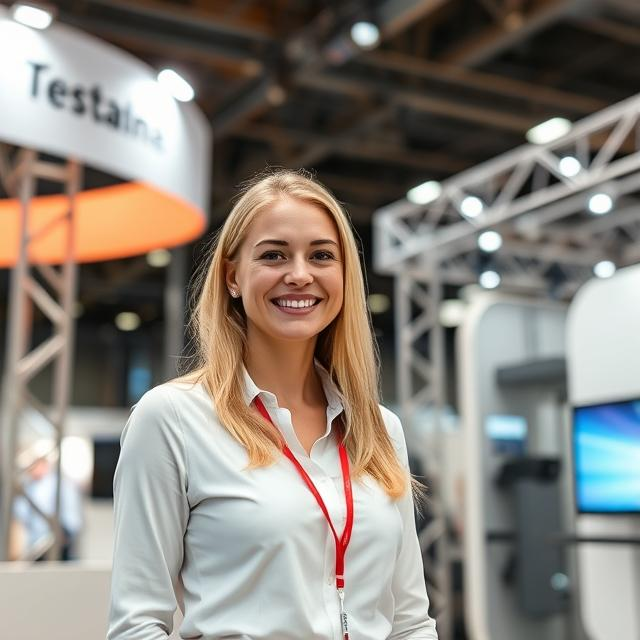
Trade fairs are global hubs for innovation, networking, and business development, bringing together professionals from diverse linguistic and cultural backgrounds. The Steel Structures Moscow Trade Fair, held at the Timiryazev Exhibition Centre, is a prime example of such an event, attracting exhibitors and visitors from around the world to showcase and explore the latest advancements in steel construction and engineering. In this multilingual and multicultural environment, the role of an exhibition translator becomes indispensable. Serving as a linguistic and cultural bridge, the exhibition translator ensures seamless communication and fosters meaningful connections between participants.
Who is an Exhibition Translator?
An exhibition translator is a language professional who specializes in facilitating communication at trade fairs and exhibitions. Unlike traditional translators, they often work in real-time, providing both written and oral translation services to ensure that language barriers do not hinder business interactions. At the Steel Structures Moscow Trade Fair, the exhibition translator plays a critical role in helping exhibitors and visitors overcome linguistic challenges, enabling them to engage effectively and achieve their objectives.
Key Responsibilities of an Exhibition Translator at Steel Structures Moscow
- Real-Time Interpretation
The exhibition translator provides on-the-spot interpretation during meetings, presentations, and negotiations. Whether it’s a technical discussion about steel fabrication processes or a business negotiation, the translator ensures that all parties understand each other clearly. This is particularly important in an industry like steel structures, where precise communication is essential. - Document Translation
Exhibitors often rely on translated materials such as brochures, catalogs, contracts, and technical specifications. The exhibition translator ensures that these documents are accurately translated, maintaining the original meaning and tone while adapting them to the target audience’s language and cultural context. - Facilitating Networking
Trade fairs are all about building connections. The exhibition translator helps exhibitors and visitors communicate effectively, enabling them to exchange ideas, discuss potential collaborations, and establish business relationships. Their ability to convey nuances and cultural subtleties can make a significant difference in building trust and rapport. - Cultural Mediation
Beyond language, the exhibition translator acts as a cultural mediator, helping participants navigate cultural differences. For example, they may advise exhibitors on appropriate communication styles or etiquette when interacting with visitors from different regions. This cultural sensitivity is crucial in fostering positive interactions. - Supporting Presentations and Demonstrations
Many exhibitors use presentations or live demonstrations to showcase their products and services. The exhibition translator ensures that the content is accessible to all attendees by providing simultaneous or consecutive interpretation. This is especially important for technical topics, such as the properties of high-strength steel or the benefits of modular construction. - Problem-Solving and Adaptability
Trade fairs are fast-paced environments where unexpected challenges can arise. The exhibition translator must be quick-thinking and adaptable, whether it’s resolving a miscommunication or stepping in to assist with an impromptu meeting. Their ability to remain calm under pressure is a valuable asset.
Why are Exhibition Translators Important?
In an international event like the Steel Structures Moscow Trade Fair, language barriers can hinder communication and limit opportunities for collaboration. The exhibition translator ensures that these barriers are overcome, enabling exhibitors to reach a global audience and visitors to fully engage with the offerings on display. Their role is not just about translating words; it’s about facilitating understanding, building relationships, and driving business success.
Skills and Qualities of a Successful Exhibition Translator
- Language Proficiency: Fluency in multiple languages, particularly Russian and English, with a strong command of industry-specific terminology.
- Technical Knowledge: Familiarity with the steel structures industry, including key concepts, processes, and technologies.
- Communication Skills: Excellent verbal and written communication abilities, with the capacity to convey complex ideas clearly and accurately.
- Cultural Awareness: Sensitivity to cultural differences and the ability to mediate between diverse groups.
- Professionalism: Punctual, reliable, and maintains a high standard of work under pressure.
- Adaptability: Able to handle dynamic and unpredictable situations with ease.
Conclusion
The Steel Structures Moscow Trade Fair at the Timiryazev Exhibition Centre is a global platform for innovation and collaboration in the steel construction and engineering industries. In this multilingual and multicultural setting, the exhibition translator plays a vital role in ensuring effective communication and fostering meaningful connections. By bridging linguistic and cultural gaps, they enable exhibitors and visitors to fully engage with each other, driving the success of the event and contributing to the growth of the industry. As trade fairs continue to evolve, the role of the exhibition translator will remain essential, underscoring the importance of clear and accurate communication in a globalized world.